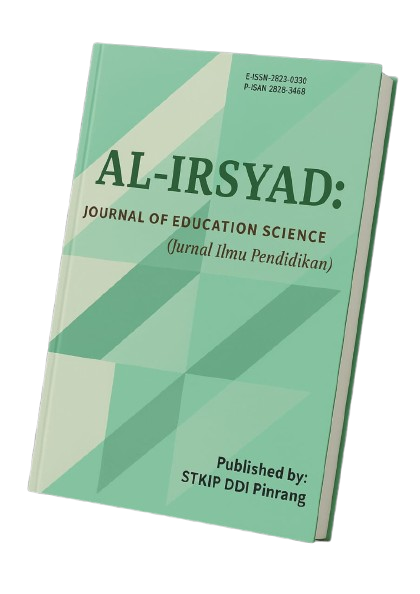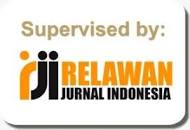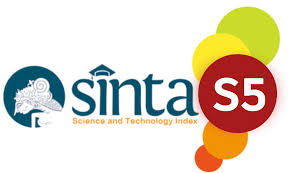ACADEMIC ENGLISH PROFICIENCY: TOEFL ITP COMPARISON BETWEEN UNDERGRADUATES AND GRADUATES AT AN ISLAMIC UNIVERSITY
DOI:
https://doi.org/10.58917/aijes.v4i2.242Kata Kunci:
Graduate Students, Mann-Whitney U-Test, TOEFL ITP, Mann-Whitney U, non-parametric test , undergraduate students, graduate students., TOEFL ITP, Undergraduate StudentsAbstrak
This research explores the gap in academic English proficiency between undergraduate (S1) and postgraduate (S2) students at a pesantren-based university, using TOEFL ITP scores as the primary benchmark. Although academic English has been widely studied in university contexts, limited attention has been given to pesantren-based institutions—especially in comparing the proficiency levels of students across educational stages. This study addresses that gap by offering fresh insights from a unique educational setting that combines religious and academic curricula. A quantitative comparative approach applied involved 140 students, divided equally between the undergraduate and postgraduate levels. After testing the data distribution using the Shapiro-Wilk test, results indicated non-normality (p < 0.05), leading to the use of the Mann-Whitney U test for statistical comparison. Descriptive analysis revealed that postgraduate students scored higher on average (M = 468.9; SD = 23.57) than undergraduates (M = 447.6; SD = 20.32). Furthermore, score ranges differed noticeably: undergraduates commonly scored between 430–460, while postgraduates were more frequently in the 460–500 range. The Mann-Whitney U test confirmed a statistically significant difference between the two groups (U = 1890.500, p = 0.020). These findings suggest a clear disparity in academic English mastery between undergraduate and postgraduate students in this context. The results highlight the importance of implementing targeted academic interventions at the undergraduate level—such as integrated English instruction, intensive support programs, and context-based language learning. By reinforcing English proficiency early in students' academic journeys, it can prepare their graduates to succeed in global academic and professional arenas.
Referensi
Ginther, April, and Xun Yan, ‘Interpreting the Relationships between TOEFL IBT Scores and GPA: Language Proficiency, Policy, and Profiles’, Language Testing, 35.2 (2018), pp. 271–95, doi:10.1177/0265532217704010
Golubovich, Juliya, Florencia Tolentino, and Spiros Papageorgiou, ‘Examining the Applications and Opinions of the TOEFL ITP® Assessment Series Test Scores in Three Countries’, ETS Research Report Series, 2018.1 (2018), pp. 1–30, doi:10.1002/ets2.12231
Hartina, St., and Syahrir Syahrir, ‘The Inappropriateness of English for Specific Purposes (ESP) with Learner’s Goals: A Need Analysis on Communication and Islamic Broadcasting Program’, Elsya : Journal of English Language Studies, 3.3 (2021), pp. 225–35, doi:10.31849/elsya.v3i3.6671
Irudayasamy, Julius, Nizar Mohammed Souidi, and Carmel Hankins, ‘Impact of an Esp Course on English Language Proficiency of Undergraduate Engineering Students: A Case Study at Dhofar University’, International Journal of Higher Education, 9.2 (2020), pp. 309–20, doi:10.5430/ijhe.v9n2p309
Melorose, J., R. Perroy, and S. Careas, ‘A Meta-Analytic Investigation of the Predictive Validity of the Test of English As a Foreign Language (Toefl) Scores on Gpa’, Statewide Agricultural Land Use Baseline 2015, 1.December (2015)
Muttaqin, Syariful, and Hsueh-Hua Chuang, ‘English for Specific Purposes, English Proficiency, and Academic Achievement in English-Medium Instruction: A Mediation Analysis’, KnE Social Sciences, 2023 (2023), pp. 302–17, doi:10.18502/kss.v8i7.13259
Noviasmy, Yessicka, ‘English Language Needs Assessment for Economics Students : An ESP Analysis’, 6.1 (2025), pp. 140–55
Palupi, Asti Diah, Tono Suwartono, and Dewi Sukawati, ‘Can Different Learning Styles Impact Efl Learners’ Toefl Achievement?’, Premise: Journal of English Education, 13.1 (2024), p. 51, doi:10.24127/pj.v13i1.8751
Perkasyah, Musthafa Fadli, and others, ‘Elevating English Proficiency : Crafting ESP-Based Digital Multimedia Learning Materials for Vocational Students in Indonesia’, 06.02 (2024), pp. 12466–71
Prawiyata, Yugi Diraga, and Ulian Barus, ‘English Language Proficiency through the TOEFL Test Taken by UMNAW Postgraduate Students’, International Journal of English and Applied Linguistics (IJEAL), 2.3 (2022), pp. 342–47, doi:10.47709/ijeal.v2i3.1687
Yu, Ruirui, and Wilawan Champakaew, ‘The Impact of Blended-ESP Instructional Model on Fostering English Proficiency among Students Majoring in Traditional Chinese Medicine’, 7.2 (2024), pp. 109–23
Unduhan
Diterbitkan
Cara Mengutip
Terbitan
Bagian
Lisensi
Hak Cipta (c) 2025 Wim Banu Ukhrowi, Binti Qani’ah Binti Qani’ah

Artikel ini berlisensi Creative Commons Attribution 4.0 International License.























